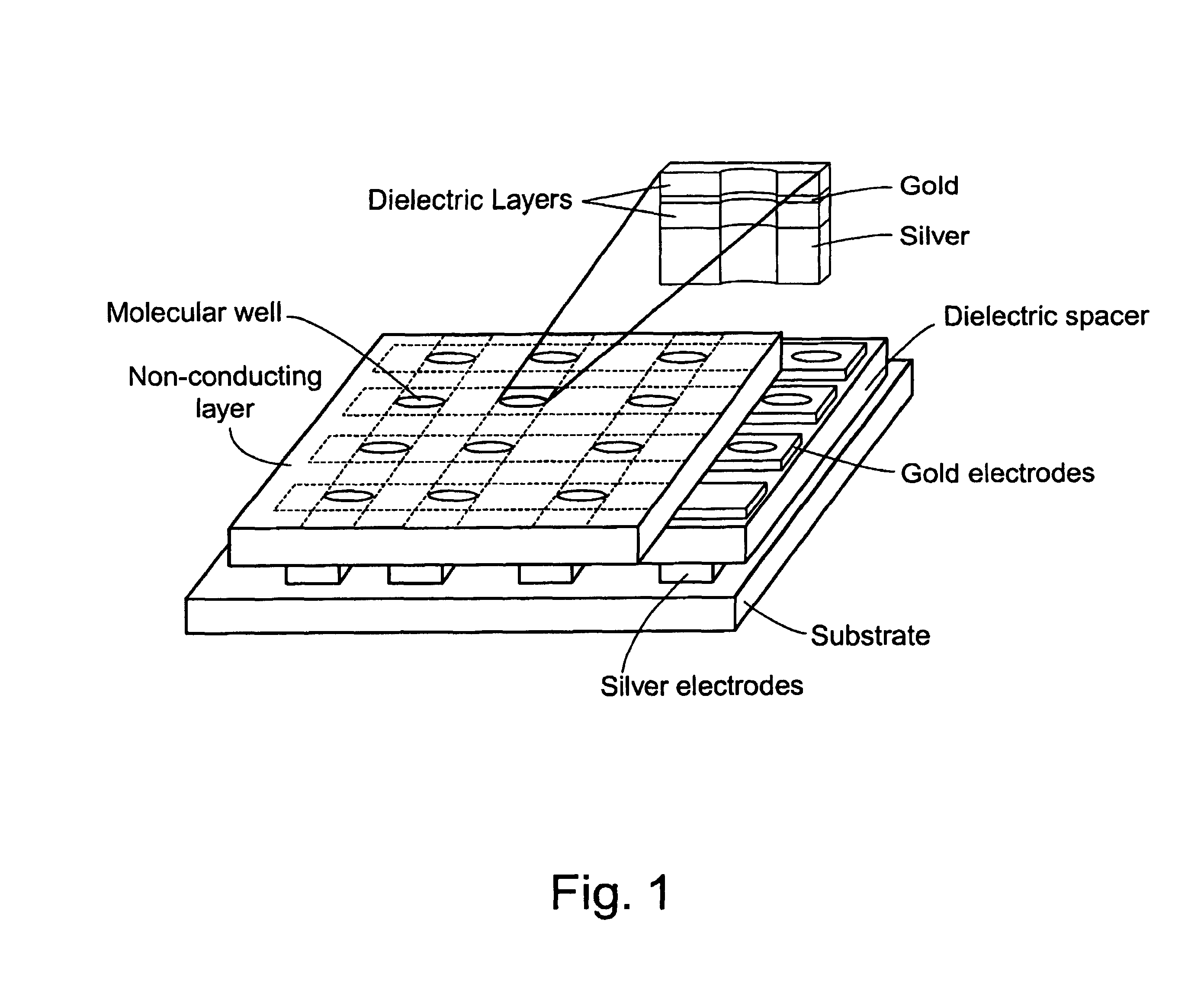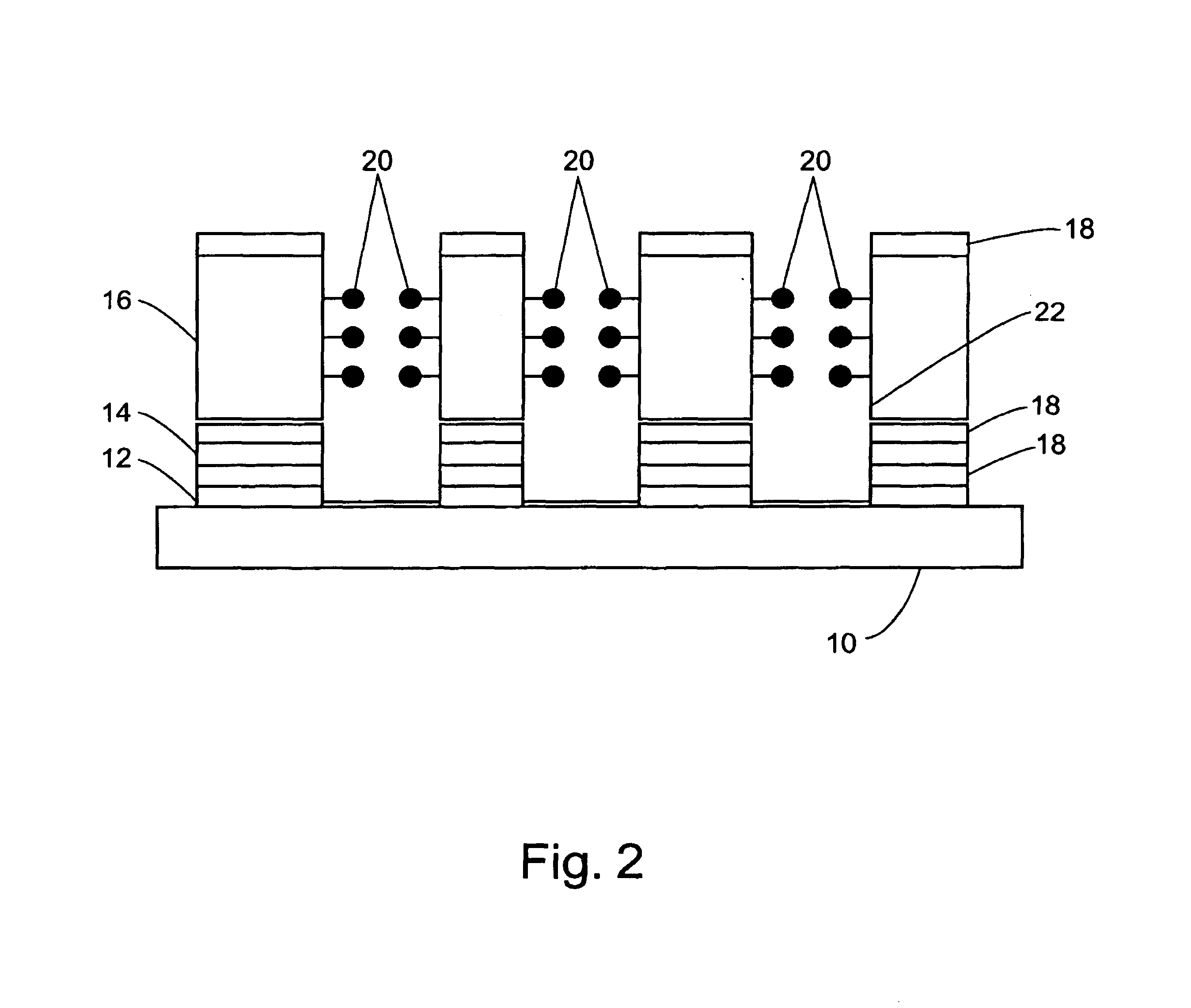Molehole embedded 3-D crossbar architecture used in electrochemical molecular memory device
a molecular memory and molecular structure technology, applied in the field of molecular electronics and microelectronics, can solve the problems of not being able to prepare sub-micron structures, not being able to provide a convenient method of regulating the relative surface area of the electrodes exposed in the vial, and not being able to achieve large precisely arranged arrays of such vials, so as to achieve suitable mechanical properties and prevent charge leakage
- Summary
- Abstract
- Description
- Claims
- Application Information
AI Technical Summary
Benefits of technology
Problems solved by technology
Method used
Image
Examples
Embodiment Construction
[0083]This invention pertains to the design and fabrication of a novel architecture that can be used for a molecular electrochemical memory device, a sensor, and a variety of other applications. The unique architecture is comprised, in certain embodiments, of two or more arrays of conductors (e.g. electrodes) arranged so that the conductors forming the cross or overlap each other. The conductors are typically separated by a dialectric layer. Within each intersection point of an upper and lower electrode (e.g. top and bottom interconnect) a well is fabricated. This well penetrates the electrodes, so that the electrodes form a portion of the side and / or bottom of the well.
[0084]Molecules (e.g. organic molecules) are attached to one ormore of the exposed conductor surfaces in the wells. Each well can then function as an electrochemical cell permitting electrochemical measurements of the bound molecules or of other molecules attached to the bound molecules.
[0085]The fabrication methods ...
PUM
| Property | Measurement | Unit |
|---|---|---|
| volume | aaaaa | aaaaa |
| volume | aaaaa | aaaaa |
| distance | aaaaa | aaaaa |
Abstract
Description
Claims
Application Information
 Login to View More
Login to View More - R&D
- Intellectual Property
- Life Sciences
- Materials
- Tech Scout
- Unparalleled Data Quality
- Higher Quality Content
- 60% Fewer Hallucinations
Browse by: Latest US Patents, China's latest patents, Technical Efficacy Thesaurus, Application Domain, Technology Topic, Popular Technical Reports.
© 2025 PatSnap. All rights reserved.Legal|Privacy policy|Modern Slavery Act Transparency Statement|Sitemap|About US| Contact US: help@patsnap.com



